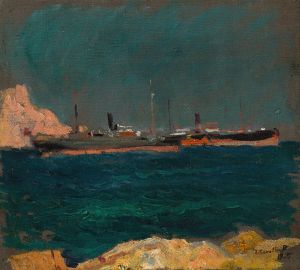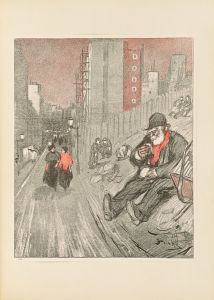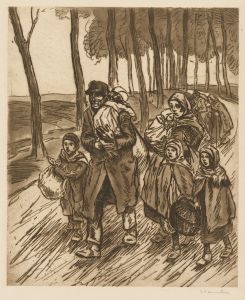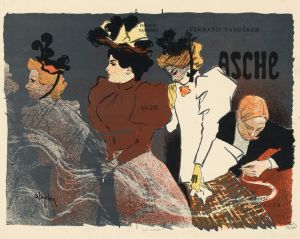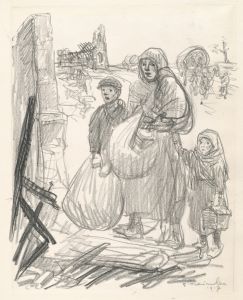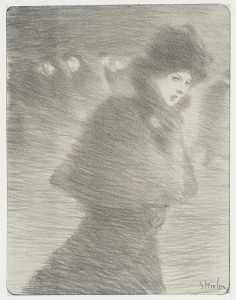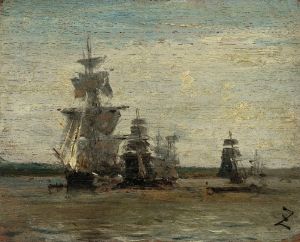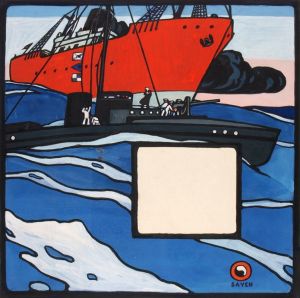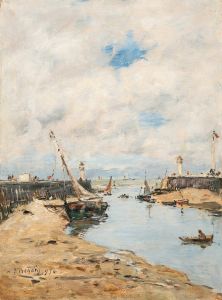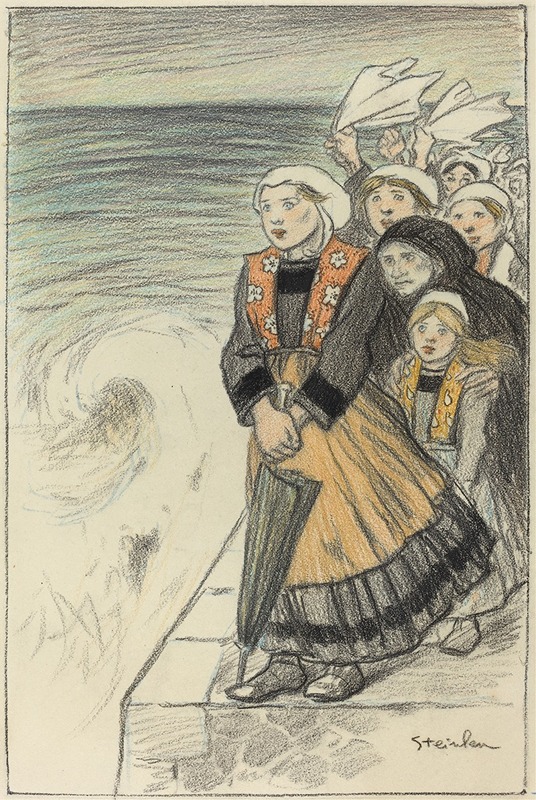
Sailors’ Wives
A hand-painted replica of Théophile Alexandre Steinlen’s masterpiece Sailors’ Wives, meticulously crafted by professional artists to capture the true essence of the original. Each piece is created with museum-quality canvas and rare mineral pigments, carefully painted by experienced artists with delicate brushstrokes and rich, layered colors to perfectly recreate the texture of the original artwork. Unlike machine-printed reproductions, this hand-painted version brings the painting to life, infused with the artist’s emotions and skill in every stroke. Whether for personal collection or home decoration, it instantly elevates the artistic atmosphere of any space.
Théophile Alexandre Steinlen, a Swiss-born French artist, is renowned for his contributions to the art world during the late 19th and early 20th centuries. One of his notable works is "Sailors’ Wives" (French: "Les Femmes de Marins"), which captures the poignant and often overlooked experiences of women whose husbands were at sea.
Steinlen was born in Lausanne, Switzerland, in 1859 and moved to Paris in 1881, where he became an integral part of the Montmartre artistic community. He is best known for his illustrations, posters, and paintings that often depicted the lives of the working class and the marginalized in society. His work is characterized by its social realism and empathetic portrayal of everyday life.
"Sailors’ Wives" is a compelling example of Steinlen's ability to convey deep emotion and social commentary through his art. The painting depicts a group of women, presumably the wives of sailors, gathered together in a moment of shared anxiety and anticipation. The setting appears to be a coastal area, with the sea visible in the background, reinforcing the connection to their husbands' maritime occupations.
The composition of the painting draws the viewer's attention to the expressions and postures of the women, each of whom seems to be lost in her thoughts or engaged in quiet conversation. Steinlen's use of muted colors and careful attention to detail enhances the somber mood of the scene. The women's clothing and the simplicity of their surroundings suggest a humble, working-class background, further emphasizing the hardships they endure.
Steinlen's choice to focus on sailors' wives highlights the often unseen emotional labor and resilience of these women. While their husbands faced the dangers of the sea, the wives were left to manage households, care for children, and cope with the uncertainty of their loved ones' return. This theme of waiting and the emotional toll it takes is a recurring subject in art and literature, but Steinlen's portrayal is particularly poignant due to his empathetic approach and realistic style.
The painting also reflects broader social and economic conditions of the time. The late 19th and early 20th centuries were periods of significant change and upheaval, with industrialization and urbanization transforming traditional ways of life. For many working-class families, the sea was both a source of livelihood and a cause of constant worry. Steinlen's work captures this duality, offering a glimpse into the lives of those who lived on the margins of society.
"Sailors’ Wives" is a testament to Steinlen's skill as an artist and his commitment to depicting the human condition with honesty and compassion. The painting remains a powerful reminder of the sacrifices and strength of women who supported their families through challenging times. Today, it continues to be appreciated for its artistic merit and its ability to convey universal themes of love, loss, and resilience.





